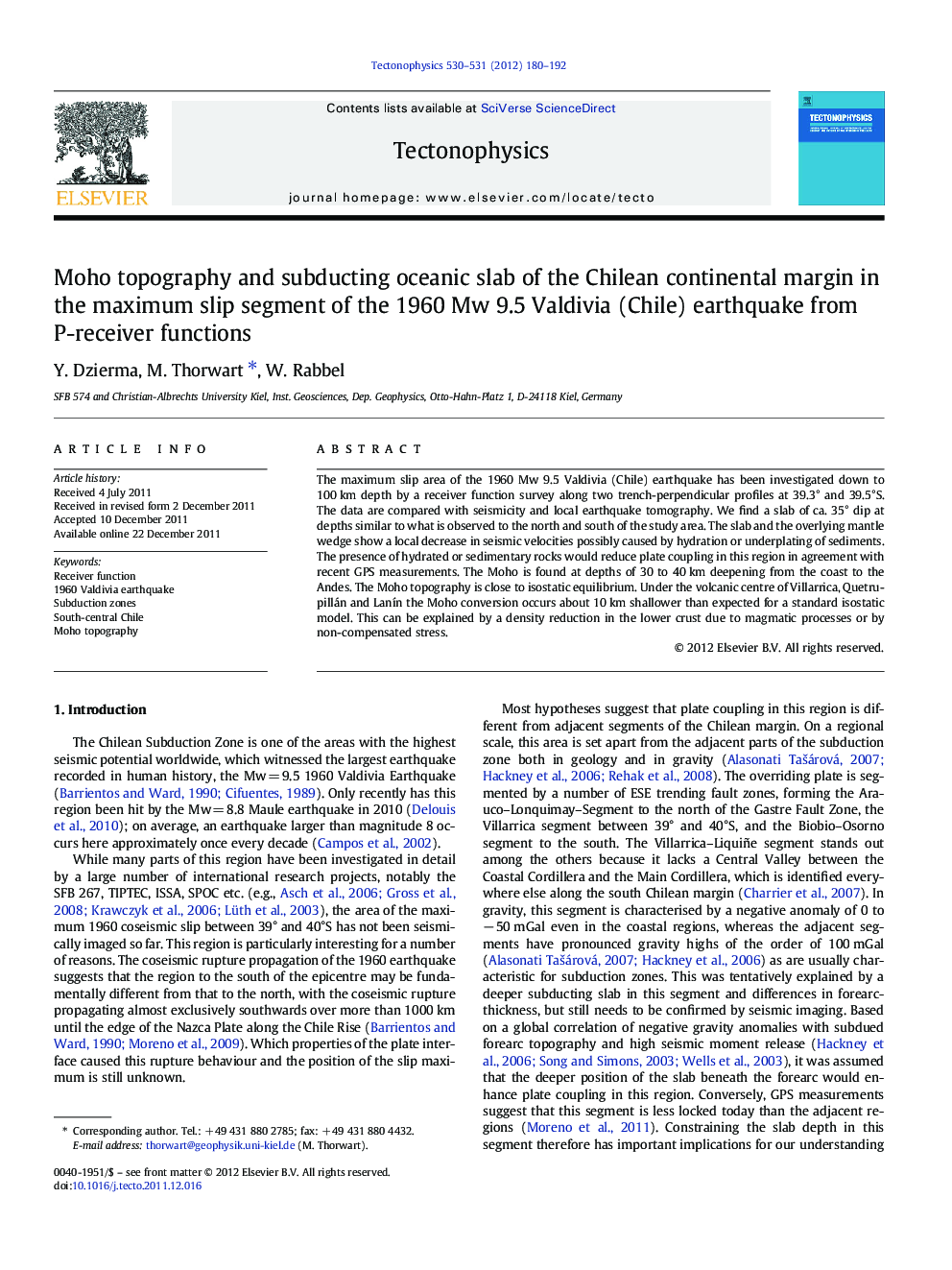| Article ID | Journal | Published Year | Pages | File Type |
|---|---|---|---|---|
| 6434267 | Tectonophysics | 2012 | 13 Pages |
The maximum slip area of the 1960 Mw 9.5 Valdivia (Chile) earthquake has been investigated down to 100 km depth by a receiver function survey along two trench-perpendicular profiles at 39.3° and 39.5°S. The data are compared with seismicity and local earthquake tomography. We find a slab of ca. 35° dip at depths similar to what is observed to the north and south of the study area. The slab and the overlying mantle wedge show a local decrease in seismic velocities possibly caused by hydration or underplating of sediments. The presence of hydrated or sedimentary rocks would reduce plate coupling in this region in agreement with recent GPS measurements. The Moho is found at depths of 30 to 40 km deepening from the coast to the Andes. The Moho topography is close to isostatic equilibrium. Under the volcanic centre of Villarrica, Quetrupillán and LanÃn the Moho conversion occurs about 10 km shallower than expected for a standard isostatic model. This can be explained by a density reduction in the lower crust due to magmatic processes or by non-compensated stress.
⺠We present a receiver function study in the region of the 1960 M9.5 slip maximum. ⺠The results are in good agreement with seismicity and tomographic results. ⺠The shallower slab indicates weaker plate coupling compared to gravimetric studies. ⺠The Moho occurs at a shallower depth under Villarrica volcano. ⺠This is possible due to magmatic processes or non-compensated stresses.
